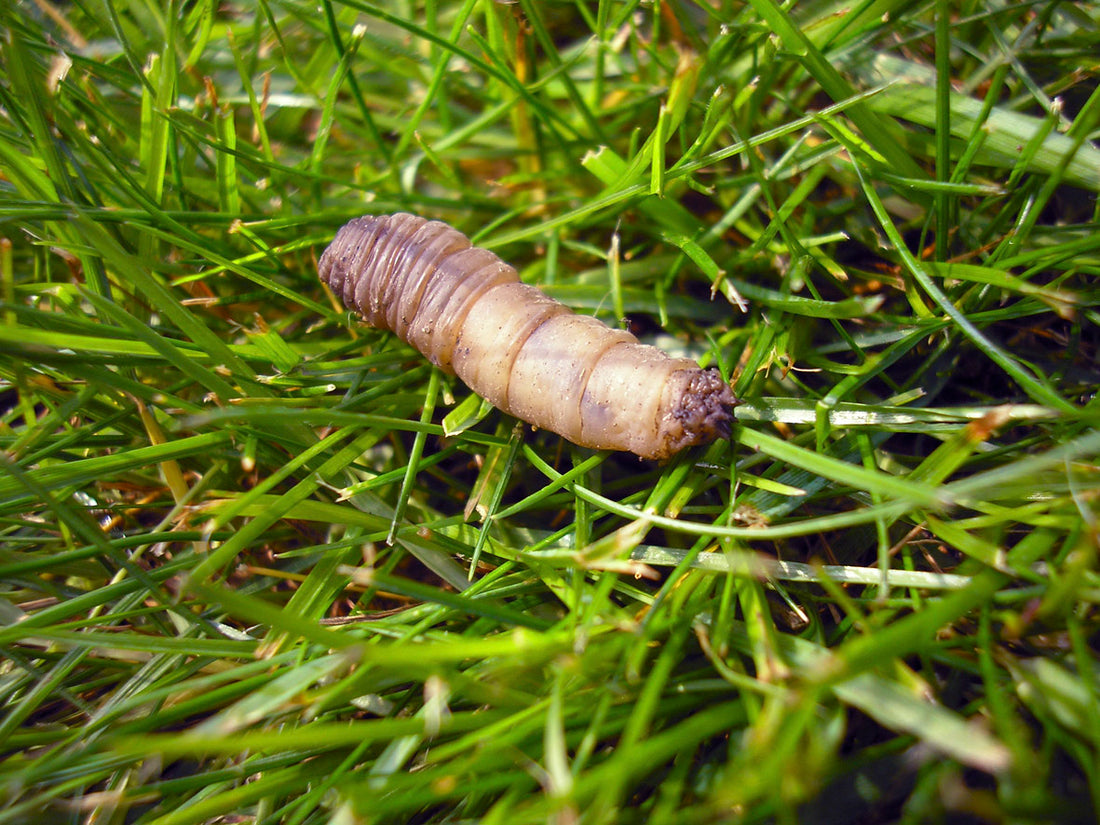The media has been filled with numerous articles, photos and videos highlighting the widespread infestation of Leatherjackets in lawns throughout the UK. Numerous TikTok videos display lawns being utterly devastated by these lawn grubs, while tabloid media show the devastation Leatherjackets can inflict upon once lush, green lawns.
What are Leatherjackets?
Leatherjackets are the larvae of crane flies, also known as daddy longlegs. They are cylindrical, legless insects (with no visible head) up to 30mm long with tough, leather-like skin, typically found in soil and grassy areas where they feed on plant roots and organic matter.
How can I tell the difference between Leatherjackets and Chafer Grubs?
Leatherjackets are greyish-brown in colour. Chafer Grubs are also cylindrical but have legs near their head, and they're usually creamy white with a brown head.
Why are Leatherjackets more of a problem this year?
There's been an increase in the population of Leatherjackets due to recent weather conditions. The mild, wet Winter has created a favourable environment for their survival and reproduction, leading to an increase in numbers.
How to tell if Leatherjackets are a problem in your lawn:

- Lawns develop patches where the grass turns a yellowish brown and dies. This can be distinguished from similar effects, caused by lawn diseases or adverse growing conditions, by lifting the affected turf and finding Leatherjackets in the surface layers of the soil.
- Crows, magpies, rooks, and starlings will search for Leatherjackets in the turf. These birds will scratch the surface to bring the Leatherjackets up.
Why am I finding Leatherjackets on my patio?
You might be finding Leatherjackets on your patio because they're naturally emerging from the soil, during wet weather conditions. As they come to the surface, they can inadvertently end up on nearby surfaces like patios while searching for food or seeking shelter. Some customers have noticed them in their property as the lawn grubs are taking advantage of small gaps and holes.
When should you treat for Leatherjackets?
The optimal treatment time for Leatherjackets is between mid-September to October, before their next season.

Leatherjackets usually have a one-year life cycle which starts when the female lays her eggs in the lawn around September, they hatch 2-3 weeks later.
During mild Winters, the pests will have grown, and the damage will be much more extensive by February/March.
Quite simply, the higher the number of Leatherjackets visible on the surface of the lawn, the larger the infestation.
How can GreenThumb help?
Our NutraShield Programme efficiently addresses Leatherjacket grubs (and Chafer Grubs as well), diminishing their population through effective eradication methods. This Pest Management Treatment is most effective when the grubs are small in late September/October.
You should start to see the effects quite quickly from this. Your lawn will look greener as a result; the effects will improve over a month as less damage is visible and your lawn has had time to recover; our regular core treatments will also help to speed this recovery up.
If you suspect you have a Leatherjacket problem (or another pest problem) then please speak to your local GreenThumb branch: Find your local GreenThumb branch

